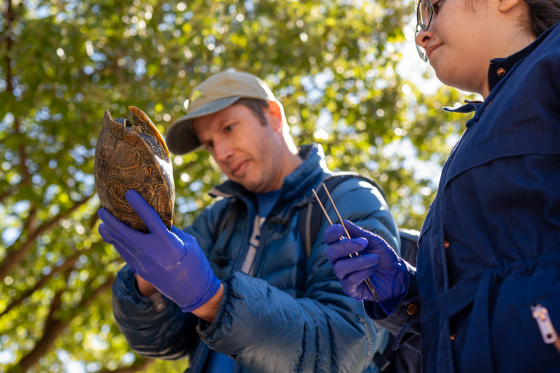The Animal Resources Center (ARC) oversees the care and use of vertebrate animals utilized as part of the research and teaching activities of the University and serves as a source of expertise and support for investigators and the administration on all issues related to laboratory animals.
The Animal Resources Center at UT Austin is dedicated to advancing scientific knowledge and improving human and animal health through the highest standards of care and ethical treatment of laboratory animals. We support the academic community by providing exceptional animal husbandry, veterinary care, and compliance with regulatory standards, ensuring that all research conducted is humane, responsible, and of the highest quality. Our commitment to education and collaboration fosters an environment of respect and compassion for animals, while promoting innovative research that contributes to the global understanding of biology and medicine.
Emergency Contact
For urgent animal health concerns, 24-hour veterinary assistance is available using the emergency contact number at 512-471-4145.
To communicate less urgent animal health issues (such as individual animal injury/illness reports), report unexpected animal deaths or unanticipated research complications, discuss non-emergency situations, obtain a veterinary treatment consult, etc., email vetstaff@austin.utexas.edu.
Veterinary Care and Consultation
The UT Institutional Animal Care and Use Committee has issued a guidance document (#15 – Guidelines for Veterinary Care, Health Checks, and Illness Reporting) which can be found on the Policies, Guidelines and Forms page.
All personnel involved in vertebrate animal research should be familiar with the contents of that document, which explains under what circumstances research staff must notify the ARC or the IACUC regarding animal health, procedural complications, unexpected deaths, etc.

ARC Animal Husbandry and Housing
ARC Facility Access
Access to the ARC is limited to authorized individuals who have completed the access requirements and have obtained formal approval from both their home department and the Animal Resources Center. View the complete ARC access policy.
Access Requests for the ARC
- Fill out the online access form completely. If the form has missing information it will not be processed. The document will be sent via DocuSign routing for approval.
- Required Facility Orientations must be completed before facility access is granted. ARC staff will contact the requestor to set up required orientations as part of the access request form approval process.
- Go to the Flawn Academic Center ID center and obtain a PROXIMITY card.
- Once the PI has signed the electronic docu-sign access form, bring the activated proximity card to the ARC lobby on the second floor. The ARC is located at 2701 Speedway.
Business Services and Rates
For business services, cost subsidy and rate schedules, see the ARC Rate Schedule. All researchers should plan budgets with the assumption that per diem rates will increase 5-10% per year. For species not listed, please contact ARC by emailing arcinfo@austin.utexas.edu or via phone at 512-471-7534 to obtain an estimated rate for budgetary purposes.
Satellite Housing Information
Satellite animal housing facilities are locations where animals are maintained or housed for more than 12 (USDA species) or 24 (non-USDA species) hours. Satellite facilities are not managed or attended to daily by Animal Resource Center staff, but instead are overseen by the Principal Investigator (PI) and research staff. The University of Texas at Austin IACUC has compliance responsibility for all vertebrate animal housing and use areas, including satellite facilities. It is required to inspect all laboratory animal housing and procedural areas at least once every six months. Satellite facilities must comply with the same regulations as centrally managed facilities. Veterinarians must be provided access to animals housed/maintained in all satellite animal facility locations.
The IACUC and ARC highly recommend the use of centralized, dedicated facilities in order to allow for enhanced communication at all levels as well as consistent and high-quality animal care. Maintaining animals in areas outside of currently approved, dedicated animal facilities requires additional resources, as each animal facility must be maintained in accordance with accreditation standards and oversight agency requirements. If an unapproved location for animal housing (as defined above) is proposed, then the researcher must
- Submit an Animal Use Protocol or an amendment to an approved Animal Use Protocol in eProtocol to list the new housing location to start the approval process,
- Request a new animal housing inspection from the IACUC,
- Develop an animal care SOP with the assistance of ARC veterinarians, and
- Develop a Disaster Preparedness Plan (DPP) with the assistance of RSC and veterinary staff. These two documents will need to be submitted and attached to the Animal Use Protocol and approved by the IACUC committee.
Satellite housing facilities may not be used merely for convenience. The IACUC committee will individually assess each request for satellite housing.
Contact IACUC@austin.utexas.edu for questions regarding the satellite facility application process.

